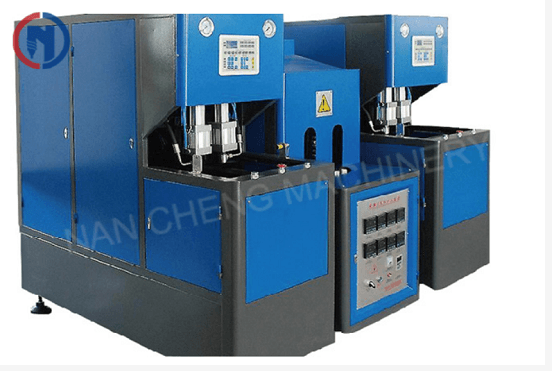Call us : +86-13601566060
+86-13921994358
Send us an Email : peter@chinancjx.com
Visit Us : 9 Tongxin Road, Leyu town, Zhangjiagang City, Jiangsu Province, China
![]() WhatsApp: +86-13921994358, +86-13601566060
WhatsApp: +86-13921994358, +86-13601566060
No doubt, a lot of companies rely so much the bottle blowing machine for the production of packaging material for their products. Well, while this is true, a lot of these companies also face a lot of problem, some of which may have to do with the quality of bottles they are having from their bottle blowing machine.
In this article, we shall be pin-pointing two of such common problems as well as ways in which these problems can be addressed without breaking a sweat.
Usually, it is expected that a PET bottle contained water at about 4oC should withstand a fall from a height of about 4-5 feet in line with the condition inside a household fridge. Compared to polyofins, which may get damaged, PET bottles doesn’t experience any breakage even around the thinnest corner except there is the presence of haze or pearlescence.
Well, in such scenario, the PET bottle may only have a little dent but won’t break due to the fact that is well-oriented even around the thinnest spot. So, it then follows that where this orientation is missing, failure of the bottle becomes inevitable. This is mostly found in some custom-made bottles where there is usually a small scratch ratio, and it is also common among bottles produced through a single-stage molding.
For a two-stage molding, which is usually the most recommended, there will be an improved performance of the bottle due to the fact that there is a cooler preform temperature that will exert more orientation on the PET material used for the production of the bottle.
On the contrary, in a single-stage production process, hold-time or cooling needs to be factored in as this will enhance the cycle time of the material. Interestingly, the cooling or hold time possesses a positive impact in the sense that it helps the preform material to shrink far away from the core in the process of cooling and this makes the process preferred by many.
Consequently, when the preform material is overheated to an extent where haze sets in, this makes crystalline areas more brittles and prone to failure.
Pearlescence and haze are two contradicting problems that may both be very difficult to distinguish, and they both contribute to the whitening of PET bottles during blowing using a bottle blowing machine.
Due to some undue stress mounted on PET material during the process of blowing, pearlescence is usually referred to as stress-whitening. The microstructure of PET bottles can easily break up, especially when they are overstretched, and this will lead to the appearance of tiny white circles around the wall of the bottle. This is exactly where the name pearls originated from.
The overstretching of a PET bottle is usually caused by both the temperature of the bottle blowing machine as well as thickness of the material used. With this, it then means that a PET preform with a thin wall exposed to a low temperature slightly above the glass-transition point is more likely to do well compared to a thicker bottle exposed to a low temperature, as it will definitely experience pearlescence.

In most cases, pearlescence on PET bottles are usually experienced around the interior of the bottle since this part are exposed to a higher stretching force. With a good understanding of this, it will be way easier to solve this kind of problem without experiencing any down time in your production process.
In a situation where the area that is affected is a bit thin, it then means that such area should be cooled while the following area under it heated for the purpose of channeling more material towards the whitish area of the PET bottle.
For a situation where the white area is thick, it then means that the overall temperature needs to be increased for the purpose of allowing the bottle to stretch without hassles.
On the other hand, haze is formed on a PET bottle at either the blowing stage or during the injection stage, especially when either of these stages are carried out above a temperature of 240oF (115oC), and then allowed to cool for just a short period of time.
At such a high temperature, it becomes very easy for PET molecules form crystals due to the high level of freedom they have, which is a result of a lower energy state at the moment.
When carrying out a two-stage blowing, it is recommended and important that the temperature be brought down or more ventilation be allowed into the chamber in order to bring down the temperature of the preform material below 240oF (115oC).
In most cases, haze is usually experienced around the outside of the preform material, and exposure to sufficient ventilation will be enough to cool the external part than the interior. For a single-stage process, hold time or cooling should be increased to take care of haze on the bottle.
Are you planning to set up your new bottle blowing factory or you are considering replacing your worn-out bottle blowing machines? If yes is your answer, then we can help you with the best machines.
Kindly click here to contact us for a quote, consultation or to make a purchase.
By continuing to use the site you agree to our privacy policy Terms and Conditions.